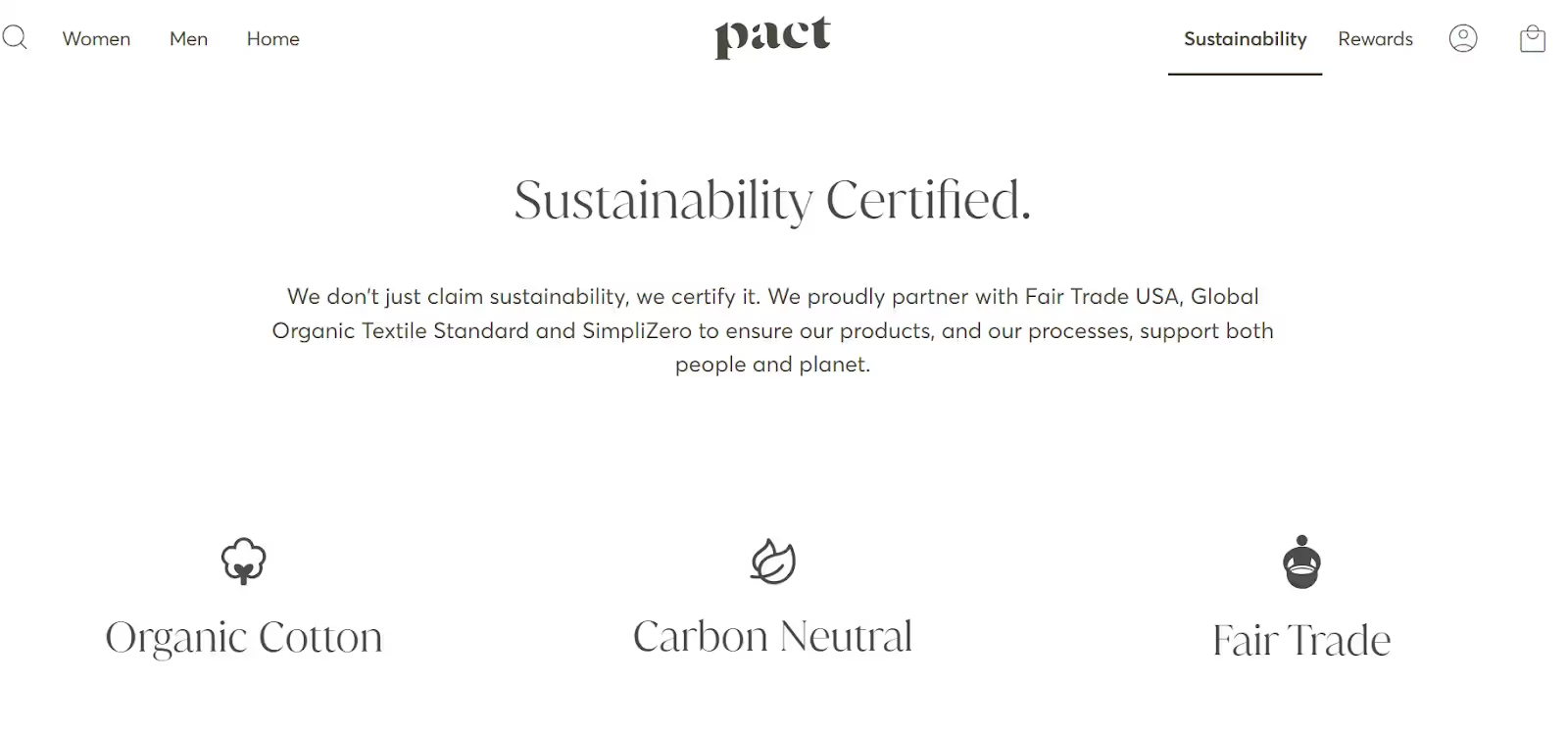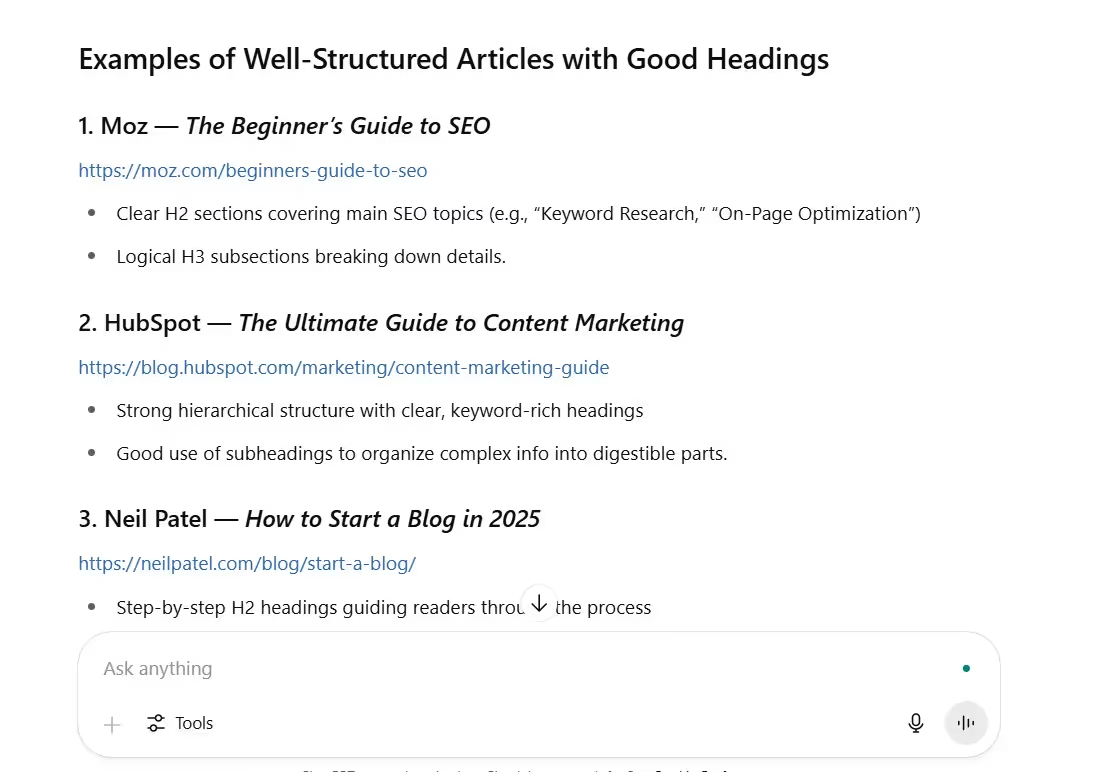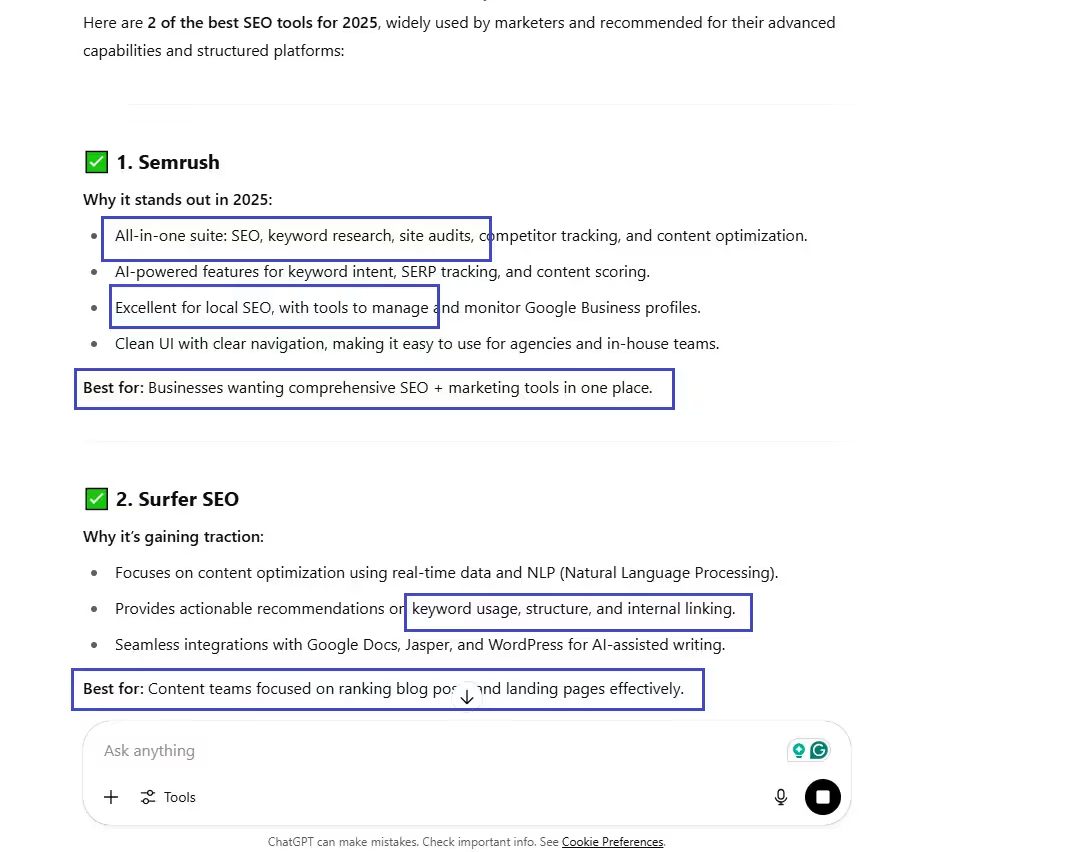You’ve built a project management tool that solves real problems for remote teams. It removes bottlenecks, keeps collaboration smooth, and cuts through the daily chaos that slows most teams down. Your users love it, and you’re confident it outperforms the usual names.
Then one day, you ask ChatGPT:
"What’s the best project management software for remote teams?"
The answer?
Trello. Monday. Asana. Maybe Notion.
Your product? Not even mentioned.
This isn’t just a missed shoutout—it’s a missed opportunity. ChatGPT is no longer just a novelty; it has become a powerful tool. With over 100 million active users, it has become a go-to source for recommendations, research, and informed buying decisions. People now ask AI for product suggestions the way they once asked Google.
When ChatGPT doesn’t “see” your product, your visibility suffers no matter how good your website or SEO strategy is. It’s no longer just about ranking on Google. It’s about appearing in AI-generated answers when your audience is asking for what you offer—a key aspect of B2B marketing.
Let's explore how ChatGPT evaluates content and the five key strategies to ensure your brand stands out.
How Does ChatGPT Rank Websites?
First, it's essential to understand that ChatGPT doesn't "rank" website pages the way Google does with its search results. There's no official ranking algorithm that determines which sites appear first in ChatGPT's responses. However, ChatGPT does have preferences for the content it references.
ChatGPT sources its answers in two primary ways:
- Pre-trained Knowledge: The default ChatGPT mode relies on the vast corpus of text it was trained on, including books, articles, and websites up to its knowledge cutoff date. If your brand was prominent in this training data, ChatGPT may already reference it.
- Real-Time Retrieval: When utilising browsing capabilities, ChatGPT can search the web in real-time, leveraging both Bing's search index and OpenAI's crawling infrastructure (OAI-SearchBot) to retrieve current information with citations.
Although there is no explicit ranking system, ChatGPT consistently demonstrates a preference for high-quality, well-written, and relevant content, aligning with the values of traditional search engines.
Google vs ChatGPT Optimization: Core Differences
Understanding the key differences between Google and ChatGPT helps develop effective optimization strategies for each platform:
.avif)
These differences underscore the need for distinct optimization strategies for each platform. While Google focuses on technical SEO elements and fresh content, ChatGPT prioritizes established authority, comprehensive information, and natural language. Develop complementary strategies to maintain visibility across both traditional search and AI-powered platforms.
Looking to boost your search engine rankings with AI? Discover practical strategies in our guide on "How to Boost SERP Rankings with AI Agents."
Main Factors to Rank on ChatGPT
1. Authoritative Sources
ChatGPT prioritizes content from reliable sources that demonstrate expertise and credibility. When your brand voice is consistently represented in reputable industry publications, academic citations, and relevant discussions, it is more likely to be included in responses.
Yarnit helps maintain a consistent brand voice across all content channels, ensuring your expertise shines through in every piece of content. By providing tools to define, manage, and apply your unique brand tone, Yarnit ensures that all content—whether created by in-house teams or external contributors—aligns with your established voice. This consistency strengthens brand recognition and authority, key factors in ChatGPT's evaluation process.
2. Relevance and Depth
Content that thoroughly addresses user questions with specific, meaningful details performs better. ChatGPT favours comprehensive content that demonstrates clear expertise in your particular industry or topic area.
3. Clear Structure
Well-organized content with a logical structure makes it easier for both humans and AI to understand your information. Clear headings, concise paragraphs, and organized presentation improve how AI systems process and represent your content.
4. Brand Presence
The frequency and context of your brand mentions across the internet play a vital role in ChatGPT's recognition of your website. Established websites with a consistent history are favoured over newer sites.
5. User Sentiment
Reviews and recommendations have a significant impact on how ChatGPT perceives and references your brand. Both the quantity and quality of reviews across various platforms contribute to establishing credibility in ChatGPT's training data.
Five Strategies to Rank on ChatGPT
1. Create Comprehensive User-Centric Content
Unlike traditional SEO, where keyword density often drives rankings, ChatGPT prioritizes content that showcases genuine expertise and fully resolves user questions. This approach demands anticipating common queries through question-based structures that deliver direct, practical answers right away. Strategically embed FAQs throughout your pages, as ChatGPT frequently extracts from these clean Q&A formats to build responses.
Target niche long-tail keywords mirroring real ChatGPT conversations, such as specific user scenarios or preferences—like dietary needs in restaurant recommendations. Layer in concrete examples, fresh statistics, and real-world applications to substantiate every claim, making your content quotable and authoritative. When content truly solves problems with unique insights, ChatGPT references it more reliably in relevant answers.
For instance, when I asked ChatGPT, “Which clothing brand is eco-friendly on Shopify?”, it recommended Pact. The brand stood out because it has a dedicated sustainability page, clear FAQs, long-tail keywords like “organic cotton basics for sensitive skin,” and stats like “saves 81% water.” Its well-structured, consistent content across product pages and help sections made it easy for ChatGPT to recognize and surface as a credible, eco-friendly option.

Tools like Yarnit can help you craft content that maintains a consistent brand voice while addressing user questions comprehensively, ensuring your expertise shines through in every piece you publish.
2. Enhance Readability and Structure
AI models, such as the ones behind ChatGPT, rely on structured formats to extract and understand information effectively. Well-organised content makes it easier for AI to identify key points and match them to user queries.
Best practices include:
- Using clear H1, H2, and H3 headers to break content into logical sections
- Incorporating bullet points, numbered lists, and concise summaries
- Adding schema markup to give context to your content
- Keeping paragraphs and sentences short and focused
- Ensuring mobile-friendly formatting
Clean formatting makes your content both human-readable and machine-readable, improving how ChatGPT parses and references your information.
For example, when I asked ChatGPT, “How should I structure headings for better readability? Give a few articles for example,” it provided results featuring a blog from Moz. These examples were chosen because the content is organized with clear headings and logical flow, which enhances readability and makes it easier for AI to understand and deliver relevant answers.

3. Improve User Experience
Creating a positive user experience on your website builds trust and authority that ChatGPT recognizes. When users have a smooth, enjoyable experience, they're more likely to share positive feedback and recommend your brand.
Focus on:
- Optimising site speed and performance on all devices
- Designing intuitive navigation where users find information within a few clicks
- Creating responsive layouts that work well on mobile devices
- Reducing friction in user journeys (signing up, purchasing, finding information)
- Using clear calls-to-action that guide users through your content
When users have positive experiences on your site, they generate better reviews and recommendations, which improves how ChatGPT views and references your brand.
4. Continuously Optimize Content
Keeping your content fresh and up-to-date is crucial for maintaining visibility in ChatGPT's responses, especially when it's using browsing capabilities to find current information. Regularly review existing content to spot outdated information, update statistics, examples, and references with the latest data, create content clusters around main topics to build comprehensive resources, monitor questions people ask about your products or services and address them directly, and expand your material with new insights as your industry evolves.
Remember that ChatGPT training updates occur at varying intervals—ChatGPT-3.5 only had information until 2021, while ChatGPT-4 has information up to April 2023. This means your optimization efforts might not show immediate results, but establishing patterns of fresh, accurate content now will position you well for future AI updates.
5. Structure Products and Services Clearly
For businesses selling products or services, clear organization and presentation significantly impact how ChatGPT references your offerings when answering product-related queries.
Effective approaches include:
- Implementing detailed product schema markup
- Creating comprehensive product descriptions with specific features and benefits
- Organising services into logical categories with clear pricing information
- Including customer reviews and use cases for each product/service
- Maintaining consistent information across all platforms (website, social media, directories)
When your products and services are clearly structured and thoroughly explained, ChatGPT can provide more accurate references to them when users ask for recommendations or comparisons.
When I asked ChatGPT, “What are the best SEO tools for search engine optimization in 2025?”, it returned Semrush and Surfer SEO. These tools appeared at the top not just because of their features, but because they use benefit-focused keywords, well-structured product pages, and consistent, clearly defined use-case content across all platforms.

Adapting to AI-Driven Discovery
Remember that frustrating moment when you searched for a solution your product perfectly solves, but a competitor was recommended instead? The five strategies we've covered aren't just technical tweaks—they're your roadmap to ensuring your content becomes the go-to recommendation when potential customers ask questions. By creating in-depth, well-structured content that genuinely answers user questions, you're positioning yourself to be discovered in the places where decisions are increasingly being made.
With tools like Yarnit, implementing these approaches becomes significantly more manageable, helping you craft content that resonates with both AI systems and human readers alike. The gap between businesses that appear in AI recommendations and those that don't continue to widen every day.
However, by consistently applying these principles, your website can join the select few that users encounter during their searches on platforms like ChatGPT. Don't let competitors capture your audience—take action today to ensure that when users search for solutions in your space, it's your website they discover first.










